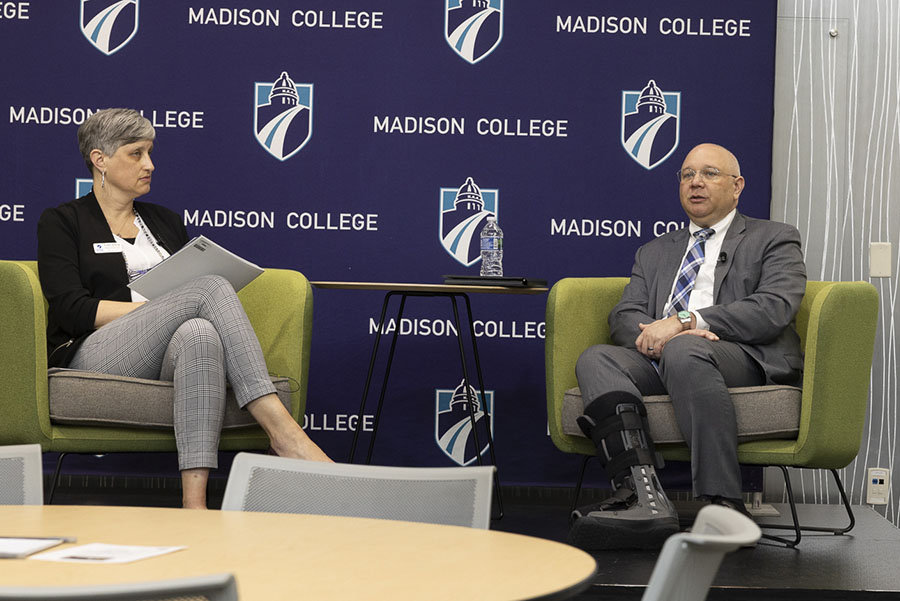How a primary election, caucus work
Lines of people slowly shuffle forward, ready to cast their ballot in a brightly lit room with linoleum floors. Whether it’s a school, community center or church, the scene is familiar and meaningful to most Americans.
If you’re new to the scene, elections can be a little overwhelming. The American system of voting is pretty straightforward though. If you don’t have much background in politics, a little explanation goes a long way.
At the city, state and national levels, the United States has a system of primary and general elections. Primary elections are held a few months before a general election, and are used to minimize the number of candidates in order to focus the election on a handful of eligible contenders.
Primary elections can take two main forms: the caucus and the standard primary election. Each state has the option of choosing between a caucus and a traditional primary election.
A caucus is a public gathering of a party’s supporters where candidates debate and speak to audiences during the voting process in order to persuade voters. A caucus is more time consuming, sometimes taking several hours.
Caucuses are, however, community-driven and deeply linked to grass-roots movements across the nation. A caucus demands personal time and attention, and allows candidates to reach out to the public individually and in person.
Standard primary elections are more traditional, and are just what you would imagine: registering either through the mail or at your polling place, standing in line and filling out a private ballot.
Whether a state has a caucus or a primary election is up to that states laws, and the election can be structured in a number of ways. Primary elections are structured around party affiliation, and so each party will have a primary if there is more than one candidate running for office.
Allowing, for example, Republicans to vote in a Democratic primary or – conversely – restricting the primary to only registered Democrats affects how “open” an election is. Here is a simple breakdown of the major types of primaries in the United States:
Open primaries allow any voter to participate in a primary, regardless of their political affiliation. For example, in Arkansas, at the open Republican primary anyone – whether they are a registered Republican, Democrat, Libertarian, or even simply undecided – can vote.
Closed primaries allow only registered party members to vote. In New York, where the primaries are closed, a Democrat or an Independent voter could not participate in a Republican Primary.
Semi-open or semi-closed primaries are, as their names imply, more moderate versions of primary elections. There is some contention over whether or not the two differ. A semi-open primary in North Carolina, for example, allows anyone to vote although the ballots are sorted by party affiliation. In this way, a voter is obligated to make a party choice before entering the booth. A semi-closed primary like those in Massachusetts allows independents to choose a party, but requires voters already aligned with a party to vote respectively.
These hybrid versions of primaries protect against “party crashing,” or voting for an unappealing candidate in an opposing party in order to lower their chances of winning in a general election, thus making it easier for their party’s candidate to win.
In open primaries, “party crashing” is a major concern because a Democrat is free to vote for an unappealing Republican candidate (or vice-versa) in order to weaken Republican chances of being elected on a national level.
Runoff primaries are also known as “top two” elections. They are generally used on a municipal level, or for state legislature in a handful of states. In a runoff primary, the top two candidates, regardless of their party affiliation, compete in the general election.
This method is rarely used on a national level, because it can result in a one-party election and could disenfranchise many voters. On a smaller scale it is less of a risk, but national diversity makes the runoff primary undesirable on such a large scale.
Here in Wisconsin we have open primaries. You do not have to register for a party, and all candidates are listed on one ballot. You can only vote for one party, however. If you want to vote for a state elective that is a Republican, you must also vote Republican on a national level come the time of the general election in November.
This shouldn’t be too much of an issue at the moment because the presidential primary, the recall vote and the U.S. Senate primary are all on different dates this year.
Our presidential primary election will be on April 3; the primary for U.S. Senate is on August 12and the recall vote would potentially be in May or June sometime, according to the Wisconsin State Journal.


























